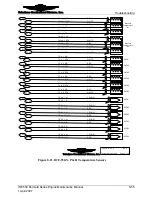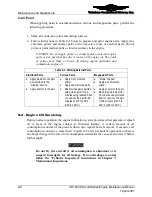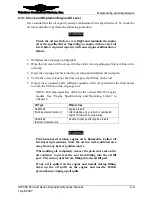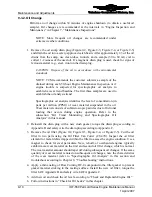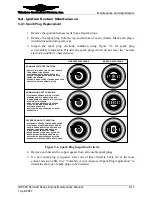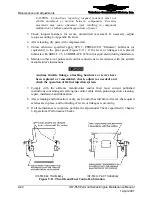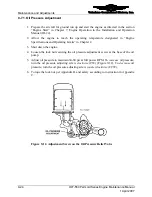
Maintenance and Adjustments
Teledyne Continental Motors, Inc.
TM
9-10
IOF-550 Permold Series Engine Maintenance Manual
1 April 2007
9-3.2. Oil Change
Perform an oil change within 30 minutes of engine shutdown (to obtain a useful oil
sample). Oil changes are recommended at the intervals in “Engine Inspection and
Maintenance” in Chapter 7, “Maintenance Inspections”.
NOTE: More frequent oil changes are recommended under
extreme weather conditions.
Procedure
1.
Remove the oil sump drain plug (Figure 9-2, Figure 9-3, Figure 9-4, or Figure 9-5)
and drain the oil into a safety-approved catch basin. After approximately 1/3 of the oil
drains from the sump, use clean tubes, funnels, and a sample (30 to 60 ml) vial to
collect 1-2 ounces of the used oil. If a magnetic drain plug is used, check for signs of
ferrous material (e.g., steel, iron) on the drain plug.
CAUTION: Dispose of the oil in accordance with environmental
standards.
NOTE: TCM recommends the customer submits a
sample of the
drained during each 50-hour Engine Maintenance Inspection or if
engine trouble is suspected for spectrographic oil analysis to
establish a wear trend baseline. The first three samples are used to
establish the oil analysis trend.
Spectrographic oil analysis identifies the level of concentration (in
parts per million (PPM)) of wear material suspended in the oil.
Wear material consists of submicroscopic particles due to frictional
loading that occurs during engine operation. Refer to the
subsection “Oil Trend Monitoring and Spectrographic Oil
Analysis” in this manual.
2.
Reinstall the drain plug with a new crush gasket; torque the drain plug according to
Appendix B and safety wire the drain plug according to Appendix C.
3.
Remove the oil filter (Figure 9-2, Figure 9-3, Figure 9-4, or Figure 9-5). Cut the oil
filter in two parts using the Oil Filter Can Cutter (CT-470). Inspect the oil filter
element for metal debris trapped within the filter to assess the engine condition. Use a
magnet to check for steel particulate. New, rebuilt, or overhauled engines typically
exhibit more wear material on the first and second oil filter change, which is normal.
The wear material amount should taper off during subsequent oil changes. If the same
quantity of wear material is noted on subsequent oil changes, note the characteristics
of the wear material (refer to “Spectrographic Oil Analysis” in this section and
troubleshoot according to Chapter 8, “Troubleshooting” instructions.
4.
Apply a thin coating of Dow Corning DC-4 compound to the filter gasket to prevent
gasket material sticking to the mating surface. Install the new oil filter; torque the
filter IAW Appendix B and safety wire IAW Appendix C.
5.
Add new oil and check the oil level according to “Check and Replenish Engine Oil.”
6.
Follow instructions in “Check for Oil Leaks” in this chapter.


